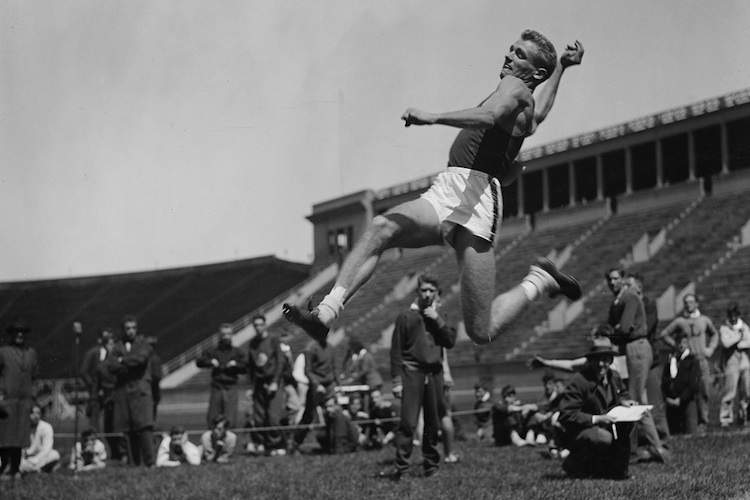
Few track and field sports are more exciting and interesting than the long jump. The powerful sprint down the runway, the graceful leap as the jumper seems to float through the air, the sudden landing with an explosion of sand it's truly amazing.
Phantom Running
If you watch closely, you'll notice that the jumper keeps pumping her arms and legs as though she were running in air. Although you might have assumed that this helps propel the jumper further through the air, phantom running is actually necessary to maintain balance.
As the jumper sprints down the runway, she has forward motion, but when she plants her foot to propel herself into the air, the jumper's lower body stops for a moment. Meanwhile, the jumper's upper body continues moving forward unchecked, creating a forward rotation of the body around its center of gravity. If no corrective action is taken, the forward rotation will make the jumper topple forward, headfirst into the pit.
Windmilling Motions
Known as the "hitch kick," a running motion helps the jumper maintain balance in the air. When a person runs, she bends her knees as her legs move forward and straightens her legs as they move backwards. In effect, this is a fast forward rotation of the legs.
The windmilling motions of the arms are also fast forward rotations. Making some parts of the body rotate faster causes other parts of the body to rotate more slowly to compensate. The movement of the arms and legs in effect uses up the jumper's bodily rotation, leaving nothing for the torso. That way, the torso can stay upright after takeoff.
Read More:
- Men's Long Jump In Slow Motion (YouTube)
- Greg Rutherford shatters British long jump record with leap of 8.51 metres in San Diego (The Telegraph)









